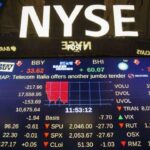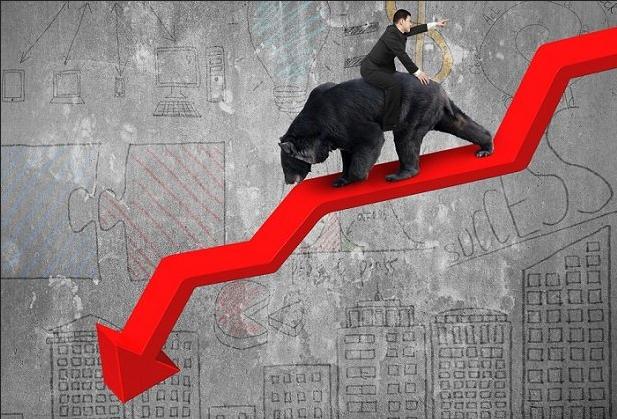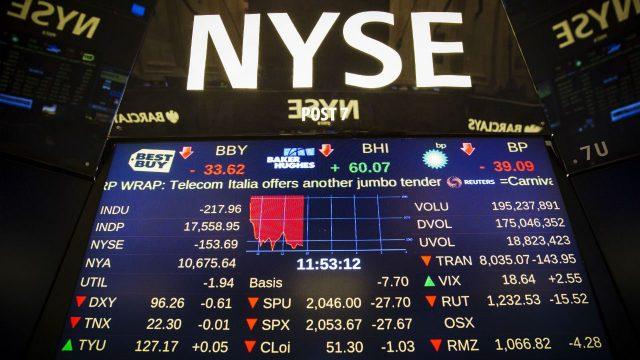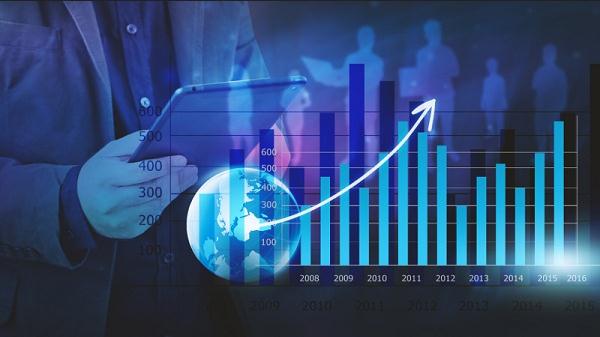A bear market is when a market experiences prolonged price declines. It typically describes a condition in which security prices fall 20% or more from recent highs amid widespread pessimism and negative investor sentiment.
Bear markets are often associated with declines in an overall market or index such as the S&P 500, but individual securities or commodities may also be considered to be in a bear market if they experience a decline of 20% or more over a period of time. long time: typically two months or more. Bear markets can also accompany general economic downturns, such as a recession.
Bear markets can be contrasted with bull markets with an upward trend.
Ideas clave
Bear markets occur when prices in a market decline by more than 20%, often accompanied by negative investor sentiment and declining economic prospects.
Bear markets can be cyclical or longer term. The former lasts several weeks or a couple of months and the latter can last several years or even decades.
Short selling, put options, and inverse ETFs are some of the ways investors can make money during a bear market as prices fall.
Understanding bear markets
Stock prices generally reflect future expectations of companies’ cash flows and earnings. As growth prospects decline, and expectations fade, stock prices may decline. Herd behavior, fear, and a rush to protect downside losses can lead to prolonged periods of depressed asset prices.
One definition of a bear market says that markets are in bear territory when stocks, on average, fall at least 20% from their high. But 20% is an arbitrary number, just as a 10% decline is an arbitrary benchmark for a correction. Another definition of a bear market is when investors are more risk averse than risk seeking. This type of bear market can last for months or years as investors avoid speculation in favor of boring, safe bets.
The causes of a bear market often vary, but in general, a weak, sluggish, or sluggish economy will bring about a bear market.
Signs of a weak or slowing economy are generally low employment, low disposable income, low productivity and a drop in business profits. Additionally, any government intervention in the economy can also trigger a bear market.
For example, changes in the tax rate or the federal funds rate can lead to a bear market. Likewise, a drop in investor confidence can also signal the start of a bear market. When investors believe something is about to happen, they will take action, in this case selling shares to avoid losses.
Bear markets can last for several years or just several weeks. A secular bear market can last 10 to 20 years and is characterized by sustained below-average returns. There may be concentrations within secular bear markets where stocks or indices rise for a period, but the gains are not sustained and prices return to lower levels. A cyclical bear market, on the other hand, can last from a few weeks to several months.
Major US market indices were near bear market territory on December 24, 2018, falling just shy of a 20% decline. More recently, major indices, including the S&P 500 and the Dow Jones Industrial Average, fell sharply into bear territory between March 11 and 12, 2020. Before that, the last prolonged bear market in the United States occurred between 2007 and 2009 during the 2008 financial crisis and lasted approximately 17 months. The S&P 500 lost 50% of its value during that time.
In March 2020, global stocks entered a sudden bear market in the wake of the global coronavirus pandemic, causing the Dow Jones to fall from near all-time highs of 30,000 to below 19,000 points in a matter of weeks.
Bear Market Rally
A bear market rally occurs when the stock market posts gains for days or even weeks. It can easily fool many investors into thinking that the stock market trend has reversed and a new bull market has begun. However, the stock market never moves in a clean, straight line, and these rallies amount to weak points in a downtrend. It is not unusual for a bear market to experience days or months of upward momentum, but until it is up 20% or more, it is still a bear market.
Secular bear market
Regular bear markets are called cyclical bear markets. A secular bear market lasts longer and is driven by long-term trends, rather than short-term sentiment. Typical bull and bear market cycles can occur within a secular bear market.
Whenever the market begins to show bearish or bullish qualities, analysts often wonder if the bull or bear is cyclical or secular. There is no clear answer, especially while the market is in the midst of one of these changes, and that makes the topic a subject of regular debate.
Phases of a bear market
Bear markets typically have four different phases.
The first phase is characterized by high prices and high investor sentiment. Towards the end of this phase, investors begin to exit the markets and make profits.
In the second phase , stock prices begin to fall sharply, business activity and corporate profits begin to decline, and once-positive economic indicators begin to fall below average. Some investors begin to panic when enthusiastic sentiment begins to fall. This is known as capitulation.
The third phase shows that speculators begin to enter the market, which increases some prices and trading volume.
In the fourth and final phase, stock prices continue to decline, but slowly. As low prices and good news begin to attract investors again, bear markets begin to lead to bull markets.
The “Bear” and the “Bull”
The bear market phenomenon is believed to get its name from Bear Market, or bear market in English, from the way a bear attacks its prey, sliding its paws downward. That is why markets with declining stock prices are called bear markets. Like the bear market, the bull market or Bull Market may get its name from the way the bull attacks by pushing its horns upward into the air.
Bear markets vs market corrections
A bear market should not be confused with a correction, which is a short-term trend that lasts less than two months. While corrections offer a good time for value investors to find an entry point into stock markets, bear markets rarely provide suitable entry points. This barrier is because it is almost impossible to determine the bottom point of the bear market. Trying to recover losses can be an uphill battle unless investors are short sellers or use other strategies to profit in falling markets.
Between 1900 and 2018, there were 33 bear markets, averaging every 3.5 years. One of the most recent bear markets coincided with the global financial crisis that occurred between October 2007 and March 2009. During that time, the Dow Jones Industrial Average (DJIA) declined 54%.
Short selling during bear markets
Investors can make profits in a bear market by short selling. This technique involves selling borrowed shares and buying them back at lower prices. It is an extremely risky trade and can cause huge losses if it doesn’t work out. A short seller must borrow shares from a broker before placing a short sale order. The short seller’s profit and loss amount is the difference between the price at which the stock was sold and the price at which it was bought back, known as covering purchases.
For example, an investor shorts 100 shares of a stock at $94. The price falls and the shares are covered at USD 84. The investor makes a profit of 10 dollars for each share, which is equivalent to a thousand dollars. If the stock trades higher unexpectedly, the investor is forced to buy back the stock at a premium, causing huge losses.
Put options and inverse ETFs in bear markets
A put or put option gives the owner the freedom, but not the responsibility, to sell a stock at a specific price on or before a certain date. Put options can be used to speculate on and protect against falling stock prices and to protect long-duration portfolios. Investors must have options privileges on their accounts to make such trades. Outside of a bear market, putting is generally safer than short selling.
Inverse ETFs are designed to move securities in the opposite direction of the index they track. For example, the inverse ETF for the S&P 500 would increase by 1% if the S&P 500 index decreased by 1%. There are many leveraged inverse ETFs that increase the returns of the index they track by two and three times. Like options, inverse ETFs can be used to speculate or hedge portfolios.
Real World Examples of Bear Markets
The bear market of 1973
The third worst market in history by percentage was the bear market of 1973. On January 11, 1973, the Dow Jones closed at 1,051.70.2. points.On December 4, 1974, the Dow had fallen to 598.64. A contributing factor to this bear market was President Richard Nixon’s decision to end the gold standard, followed by a period of inflation.
The bear market of 1970
The bear market of 1970 began on December 31, 1968, when the Dow closed at 943.75.2
It fell over 30% before bottoming at 631.16 on May 26, 1970
2008 financial crisis
The growing home mortgage default crisis hit the stock market in October 2007. Back then, the S&P 500 had hit a high of 1,565.15 points on October 9. By March 5, 2009, it had fallen to 682.55 points as the scope and ramifications of the home mortgage crisis and defaults on the broader economy became clear. Major US market indices were again near bear market territory on December 24, 2018, falling just shy of a 20% decline.
2020 financial crisis
Most recently, the Dow Jones Industrial Average entered a bear market on March 11, 2020, and the S&P 500 entered a bear market on March 12, 2020. This followed the longest bull market on record for the index, which began in March 2009 Stocks were reduced by the effects of the COVID-19 coronavirus and the fall in oil prices due to the division between Saudi Arabia and Russia, countries that were unable to reach an agreement outside of those specified in OPEC. During this period, the Dow Jones fell sharply from all-time highs near 30,000 points to below 19,000 in a matter of weeks.
Other examples include the Great Depression of 1929. The aftermath of the dot-com bubble burst in March 2000, which wiped out approximately 49% of the value of the S&P 500 and lasted until October 2002.










